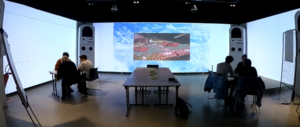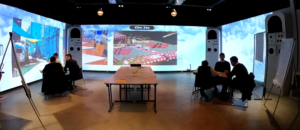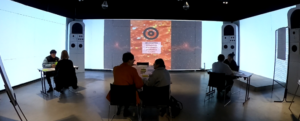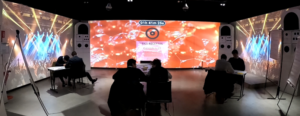In the effervescence of the 21st century, creativity appears to be an essential and indispensable lever to help companies navigate through constant challenges.
Creativity is often perceived as a purely cognitive process, but it is in fact a multimodal process that results from the integration of brain networks and sensory modalities. Sight, hearing, smell, touch and taste — the architects of consumers’ emotional, hedonic and behavioural response — have an impact on creative thinking.
Scientific studies1,2,3 have revealed that sensory modalities have a specific effect on creative processes such as divergent thinking (i.e. the association of ideas) or convergent thinking (i.e. the creation of a new idea from the combination and selection of different stimuli).
The teams at Repères, the Institut Lyfe (formerly Institut Paul Bocuse) research and innovation centre, and the Émulsion Créative agency are joining forces to offer companies access to creative approaches enriched by the stimulation of the senses.
Using technologies from The Lab in the Bag, we offer creative workshops in an immersive multi-sensory environment, activating the sensory modalities relevant to the different stages of the creative process.
A study designed to demonstrate the contribution of the senses in a creativity workshop was the subject of a paper presented at the latest PANGBORN Sensory Science Symposium, held in Nantes this summer. You can download the poster here.
The brief was to create pulses-based recipes that would be irresistible to the French youth.
These workshops were held in collaboration with students and chefs from the Lyfe Institute.
3 workshops were carried out under standard conditions (Figure 1and Figure 3 ), without using the functionalities of the immersive room. 3 other workshops were ‘augmented’ by 360° projection sound and visual effects (Figure 2 and Figure 4), chosen on the basis of scientific publications reporting their effects on cognitive processes.

Figure 1 Divergence phase in a standard workshop
The final recipe proposals were evaluated by chefs, who highlighted the better performance of the immersive multisensory approach, with more original and detailed ideas, significantly outperforming those generated in the standard environment.

Figure 2 Divergence phase in a multisensory immersive workshop
Analysis of the participants’ behaviour revealed that they were more involved in immersive situations :
During the divergence phase (brainstorming), the immersive groups (Figure 2) continued to produce new ideas throughout the time allocated to perform the task, while the standard groups (Figure 1) ran out of ideas before the end of the exercise.

Figure 3 Standard workshop convergence phase
During the convergence phase (in other words, the creation of a new idea from two stimuli), participants were more focused (Figure 4) and were less likely to get distracted or digress on other subjects.

Figure 4 Convergence phase in a multisensory immersive workshop
Multisensory immersive technologies, combined with the expertise of creativity specialists, open up new horizons for innovation.
1Bourgeois-Bougrine, S., Bonnardel, N., Burkhardt, J. M., Thornhill-Miller, B., Pahlavan, F., Buisine, S., Guegan, J., Pichot, N., & Lubart, T. (2022). Immersive Virtual Environments’ Impact on Individual and Collective Creativity A Review of Recent Research. European Psychologist, 27(3), 237-253. https://doi.org/10.1027/1016-9040/a000481
2Wang, Q. J., Escobar, F. B., Mathiesen, S. L., & Mota, P. A. Da. (2021). Can eating make us more creative? A multisensory perspective. Foods, 10(2), 1-17. https://doi.org/10.3390/foods10020469
3Xia, T., Sun, Y., An, Y., & Li, L. (2023). The influence of music environment on conceptual design creativity. Frontiers in Psychology, 14(February), 1-9. https://doi.org/10.3389/fpsyg.2023.1052257
Any questions, any projects?
We are eager to discuss your business needs, and answer any questions you may have.